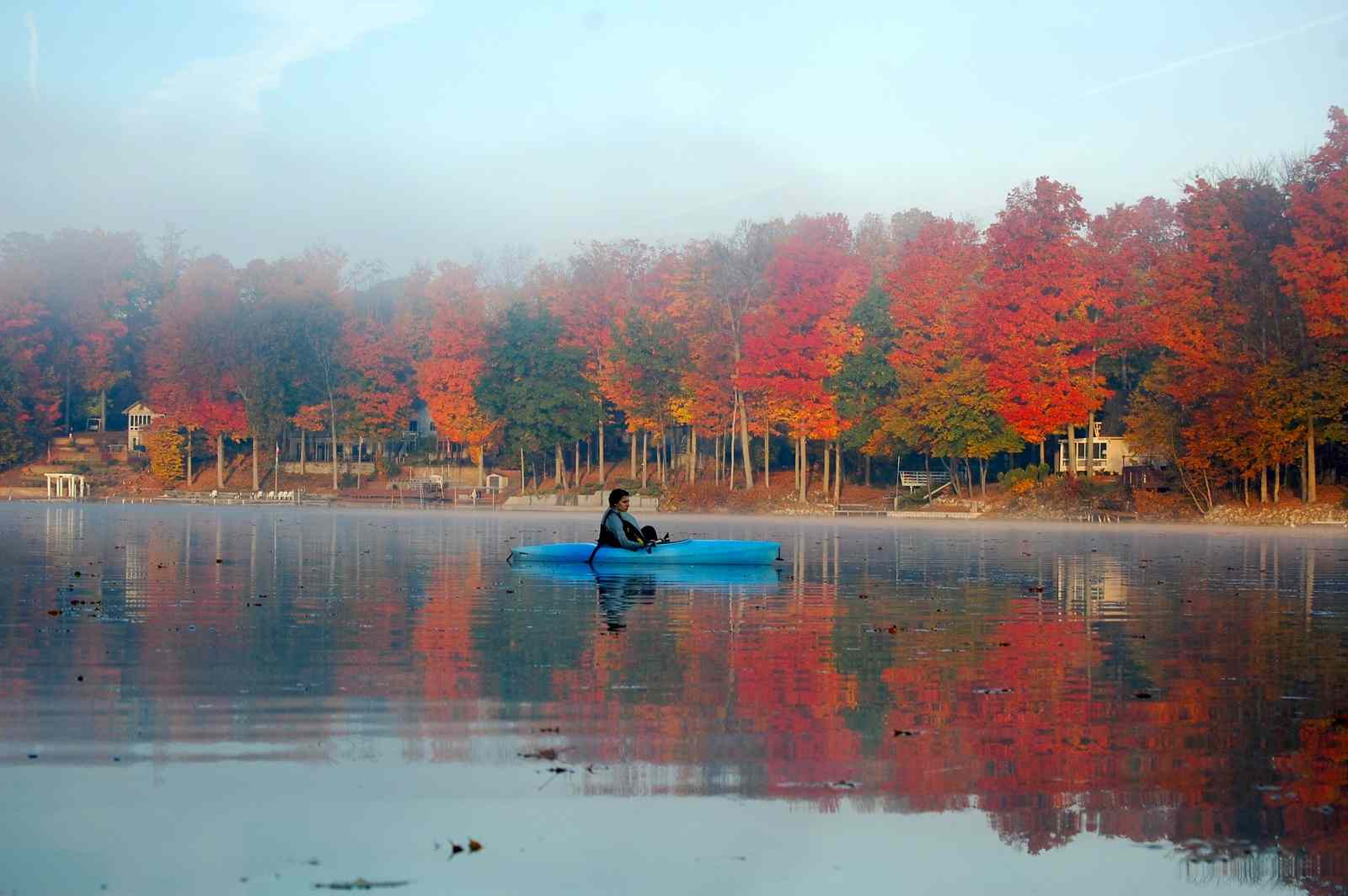Published October 17, 2018
I’m so glad I live in a world where there are Octobers.
Autumn is often referred to as the last and loveliest season, the crest of the year’s beauty.
The allure of the light, the leaves, the water is irresistible. In Lake Ontario’s watershed, we are spoiled silly with the season’s splendor.
Despite the shortened days, our waterways are still abuzz with recreational activity. Fishing, paddling, boating, SUPping and surfing are at a high point in the fall as both beauty and abundance intensify on our lakes and rivers.
The warm orange glow of the season can be deceiving, as water temperatures on the Great Lakes are quickly dropping. Consequently, autumn (and early spring) are the most dangerous times of year for boaters and paddlers to be out on the water.
Cold water safety
The Great Lakes are a haven of recreational water activity. In any given season, there are 6000 recreational boaters in the Toronto Harbour alone.
Swim Guide writer, Bruce Thorson, interviewed Angus Armstrong, Harbour Master and Chief of Security for Ports Toronto, for tips on keeping safe as the water temperature dips in the famously cold, and deep Lake Ontario.
Armstrong served 27 years with PortsToronto, and is an expert on Cold Water Safety on Lake Ontario. Armstrong has seen a lot of development over the course of his career surrounding safety on the water.
There have been many positive changes: boats are better, lifejackets are better, (and more comfortable, and stylish), and there is an abundance of safety equipment to protect people in the event of a cold water emergency.
There is also a lot more knowledge available on how to stay safe when boating or paddling in cold water.

His tips will be helpful for any Great Lakes or cold water adventurer.
Here are 8 cold water safety rules to live by:
1
Never go out in cold water without a lifejacket or PFD
Boaters, paddlers, and SUPpers should never go out on the water without a personal floatation device. This is the most important water safety practice. Wearing a lifejacket or Personal Flotation Device (PFD) is doubly important in cold water.
In cold water blood rushes out the arms and legs in order to preserve vital organs. In other words, your arms and legs, which you need to stay afloat, are simply not going to work in cold water. Without a lifejacket, even the strongest swimmers sink in a few minutes because they can’t tread water to keep themselves afloat.
Take advantage of modern-day safety equipment: We’ve come a long way when it comes to water safety equipment. Dry suits, wet suits, immersions suits, flares, sound signalling appliances, radios, waterproof flashlights, GPS, buoyant radio distress beacons.
There is a lot of equipment that can save your life in an emergency and enable your rescue. Use it.
2
If you are a paddler, stay close to the shoreline
Conditions change fast on Lake Ontario, and this is particularly true in the fall. Kayakers, rowers, canoers, paddleboarders, and anyone paddling their watercraft should stick close to the shore.

3
Don’t fall in the water
Take every precaution not to fall into the water. That means positioning yourself in your craft in order to avoid falling overboard and avoiding situations and conditions that can cause your craft to capsize.
4
Get out of the water as soon as possible
If you do fall overboard get your body (or as much of your body as you can) out of the water as soon as possible. Climb onto your overturned watercraft, or any floating object.
5
Know and use the H.E.L.P and HUDDLE
If you do fall in the water, and can’t climb out, immediately go into a Heat Escape Lessening Position (H.E.L.P). Make yourself as small as possible by curling your legs up to your chest. This prevents heat from escaping from your body. The Red Cross estimates the H.E.L.P can increase survival rates in cold water by up to 50%.
If you are with a group of people, HUDDLE together. This will help you all stay warm, will make you easier for your rescuers to spot, and will help ensure that no one in your group get lost.
6
Don’t try to swim to shore
One of the biggest misconception boaters and paddlers have is that they can swim to shore. Even when the shore is only a hundred meters away this is a deadly idea.
Due to the cold after a few strokes the effects of the cold take over the body and people go into cold shock or hypothermia. Chances of survival and of rescue greatly increase if boaters and paddlers stay with their craft.
7
Take every precaution to keep your kids dry
Children are the most vulnerable to cold water. Due to their small body mass children fall victim to cold shock and hypothermia very quickly, even when donning PFDs, lifejackets, and engaging in best practices such as H.E.L.P. and HUDDLE.
When boating or paddling with children take every precaution to ensure they do not end up in the water.
8
Know what you’re doing
This is the most important rule when it comes to cold water safety. Without knowledge of your craft, of the water body, and of safety practices you are putting yourself and the people in your boat in danger.
Know how to operate your boat. Know the waterways and the current and possible conditions. Know what to do to protect yourself and your crew in an emergency.
